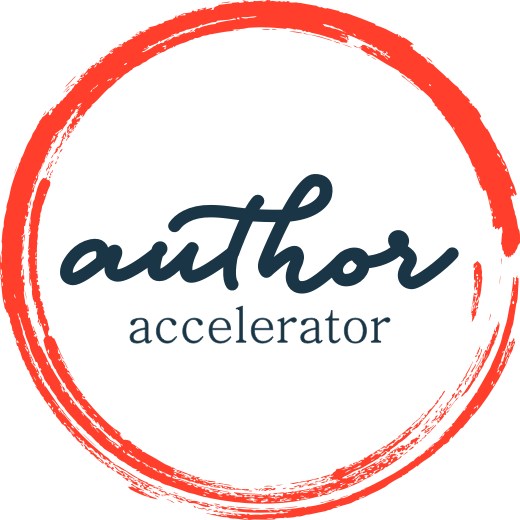Common Mistakes with Revision OR The Dos and Don'ts of Self-Revision
Today’s blog post comes to us from Author Accelerator certified book coach Samantha Skal.
Samantha Skal
Certified Book Coach
Revision. Even the word can elicit intense emotions in us writers: overwhelm about what has to be done, and despair that we’ll ever be able to pummel our manuscripts into something resembling a cohesive story. Most writers go through several rounds of revision after finishing draft one, and it can be a rollercoaster to finish each round, get feedback, realize we have to go back and rethink, and then do it all again.
These are not only normal feelings that every writer feels on occasion (or a lot), but are also completely understandable. Yes, it’s hard work, and yes, it can feel overwhelming. But being in revision is also a joyous place to be, because there are so many possibilities, and so much hard work is already done.
Below are some of my favorite go-to tips for self-revision when you need to tame a big, messy, confusing, overwhelming beast of a manuscript on your own. I’ve tested these tips on myself, I use them with my book coaching clients, and I know they work.
DO meet your manuscript where it is.
Respect the hard work you’ve put in so far. It’s a HUGE deal to write 80K or 90K or 100K words and type “The End”. Even if you end up rewriting some or even most of those words, that’s okay. It’s part of the process.
DO take a breather and step away from your manuscript before any large-scale revision.
At minimum, take three weeks. Even better, take three months. We writers tend to see our stories as fully developed in our heads, and we have trouble recognizing what’s NOT on the page. Taking a step back can give our brain the space it needs to see issues like subplots that go nowhere, or characters that aren’t shining as brightly and clearly as we want them to.
DO write a draft of your story’s book jacket copy BEFORE you start revising.
Think about how your book or novel would be described if it were on the shelf and trying to hook in a reader. Book jacket copy doesn’t tell what happens. It doesn't give away the end. Instead, it leaves a big unanswered question for the reader – will the protagonist achieve their goal or not? What are the consequences if they don’t? Why does this matter to the protagonist?
This doesn’t have to be perfect or even snappy writing (although that’s always good practice). This exercise forces us to get straight to the point of the greatest conflict and the big story question, as well as forcing us to succinctly describe who our protagonist is, where they are in time/space, what they want and why they want it, what stands in their way, and what the consequences are if they don’t get what they want.
If this is hard or feels all over the place, that’s a clue that perhaps the protagonist could use some more thought. If we can’t answer why the protagonist wants something and why it matters if they don’t get it, it’s going to be tough to show our readers why they should care about reading our protagonist’s story.
If this is easy, that’s great! Keep this book jacket copy in mind as you move forward into the next steps.
DO make an outline of your book AS IT IS RIGHT NOW.
Start a new document and then go through your manuscript, scene by scene, and write down the highlights of what happens and why each scene matters to the protagonist (i.e. make an Inside Outline*.)
Even if you’ve already been working from an outline, you might be surprised at how much things have deviated. If you haven’t outlined until now, you’ll be able to see your whole story in a couple pages, instead of grappling with 300 pages.
*The Inside Outline is a genius tool developed by Jennie Nash, and is the magic ingredient to solving any revision problem. It also works up front when planning your story. Check out her book for more information.
DO look at your As-Is outline with a critical eye.
Look at the first scene. Ask yourself: Is it clear who my protagonist is, what they want, and what the stakes are for them?
Then, look at each scene on its own. Ask yourself:
Does something change for the protagonist (or POV character) in each scene?
Does each scene flow logically to the one after it?
Do the characters’ actions make sense?
Does the story ramp up to a climactic peak where the overarching story problem is answered?
If the answer to any of those questions is no, make a list of the issues you see. You’re not worrying about how to fix them right now; you’re just writing them down.
DO keep a list of little things to fix at the end.
For example, everyone has a favorite word (or words) they use. Mine is nodding. My characters are constantly nodding. It’s obnoxious. You’ll notice yours as you start revising, but instead of getting sidetracked and correcting all instances of nodding in the middle of changing a subplot, make a note, and use the Find function later to tackle those once your story structure is in place.
DO read your entire manuscript out loud after you finish revising.
This is a last step after your revision and before using beta readers (or any other readers.) You’ll catch all KINDS of grammatical errors, misspellings, repeated words, etc. You can also use any number of applications to have your computer read it to you. I like talking to the wall for this, and if I had a cat, I’d talk to the cat.
Keep a list of things to go back to, or take it a chapter at a time and correct as you go.
Because betas are used to seeing professionally produced books with only tiny typos, giving them something that isn’t proofread to your best ability will detract from their ability to see the story holes. This leads me to my next tip:
DON’T use beta readers without giving them specific questions to answer.
Beta readers and critique partners are wonderful, but they are a precious resource because someone can only see your story for the first time once. So, make sure you’re getting as much out of them as possible. Otherwise, you might get feedback like, “Yeah, I liked it”, which while nice, is decidedly unhelpful for determining where you might further revise.
I suggest asking betas questions like:
On what page(s) did you put it down because you were bored? (Putting it down because they had to stop reading for life stuff doesn’t count.) This tells you there might be some room for improvement with suspense and maintaining tension.
On what page(s) did you get confused? This tells you where you might need to revise for clarity. Is your goal for that part of the story actually on the page or could it be clearer?
For mysteries or big story reveals, on what page did you figure it out? This is really helpful for determining if clues and misdirection moments should be added or subtracted.
If when you get their notes back you find they didn’t “get” something you were going for, it’s an opportunity for clarifying that point in the manuscript.
DON’T tackle too much all at once.
Take your scene issue list and rank each issue from biggest and toughest to fix, to smallest and easiest. The big things are things like structural changes, plot adjustments, story problem issues, character development issues, and removing subplots or characters. Easier changes are things like changing someone’s name, or continuity issues like making sure the person wearing glasses does so during the entire book.
The more overarching the issue, the more time it will take to tackle, and the more it will touch. These big, messy issues are what we tackle first, since they affect everything else.
A quick path to making revision feel hellish is to try to tackle all the things at the same time. So, take each issue one at a time, biggest to easiest, and check them off as you complete them. You’ll be able to see your progress, and you’ll have a plan to follow, which makes getting it all done much easier.
DO remember that that the books we see in the bookstore did not spring forth in that state, free of typos and plot holes and beautifully developed characters.
Instead, the author spent months, and probably years writing and revising. Then, a bunch of industry professionals used their laser focus to make the story shine even brighter and the characters more compelling, and then it probably went through another few rounds of eyeballs to make sure the first six people didn’t miss anything.
So, don’t beat yourself up. This is hard. It gets messy in the middle of the process for everyone.
And finally, if you get stuck, DO consider hiring a book coach.
We’re trained to make the revision process less hellish, so if all of this seems overwhelming and terrible, or you’ve done everything you can and the manuscript still isn’t “working”, consider letting us help. We’re all really nice, and we promise to tell you what’s wrong. :-)
Happy writing!
Samantha Skal is a thriller author and Author Accelerator certified fiction book coach who specializes in coaching writers out of revision hell. She loves reading, writing, and coaching mysteries and thrillers of all kinds. Learn more at samanthaskal.com.

